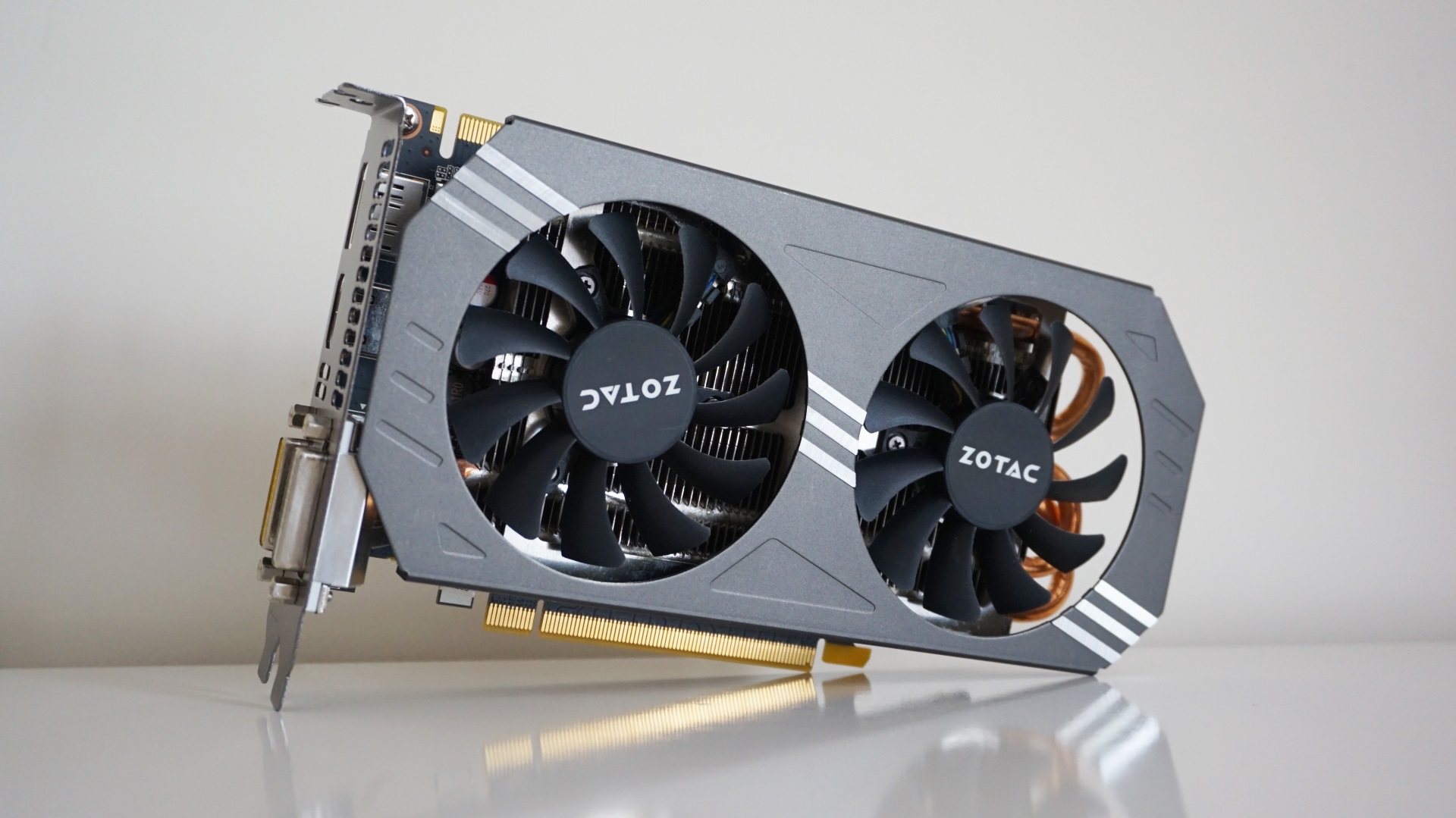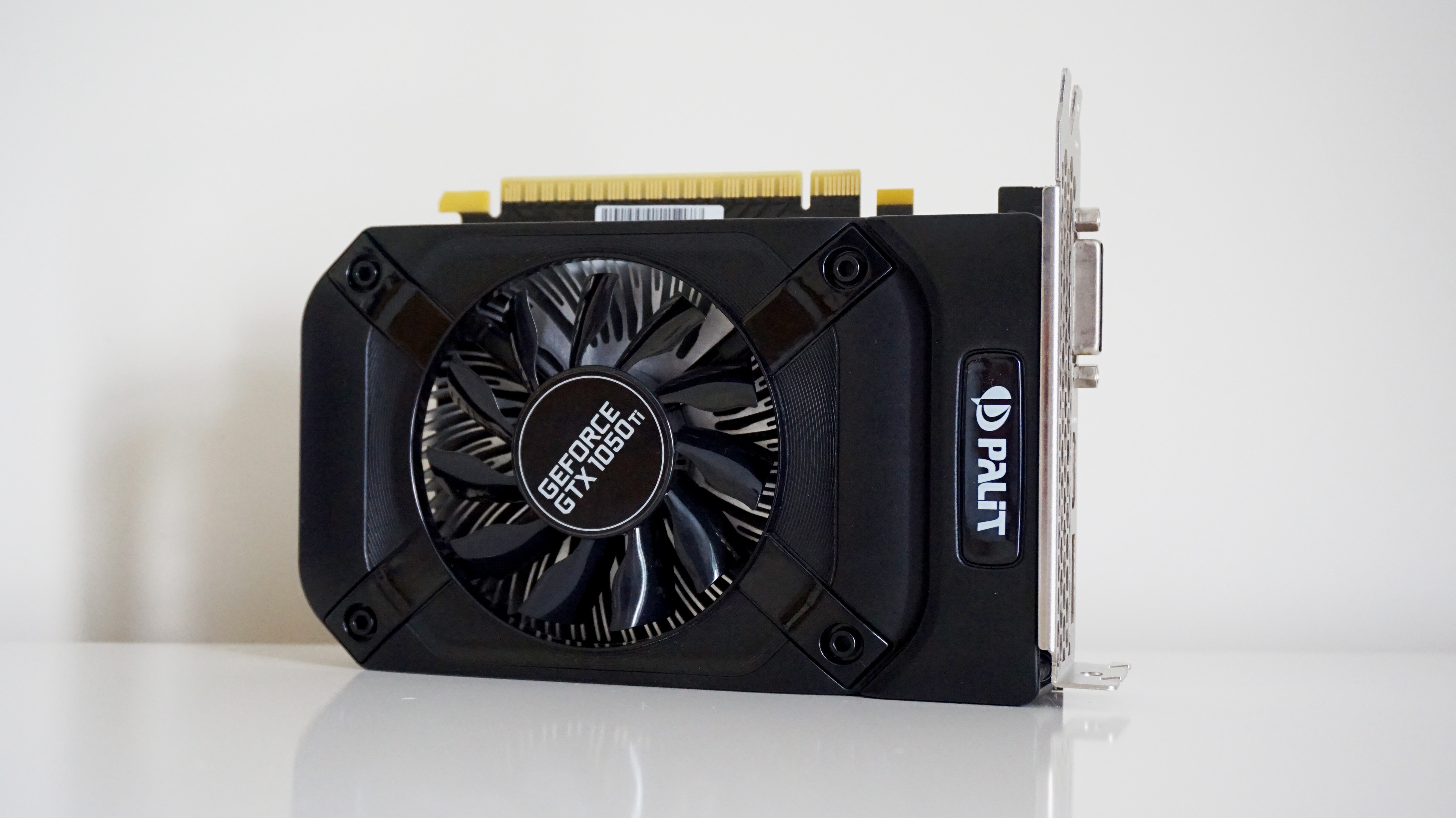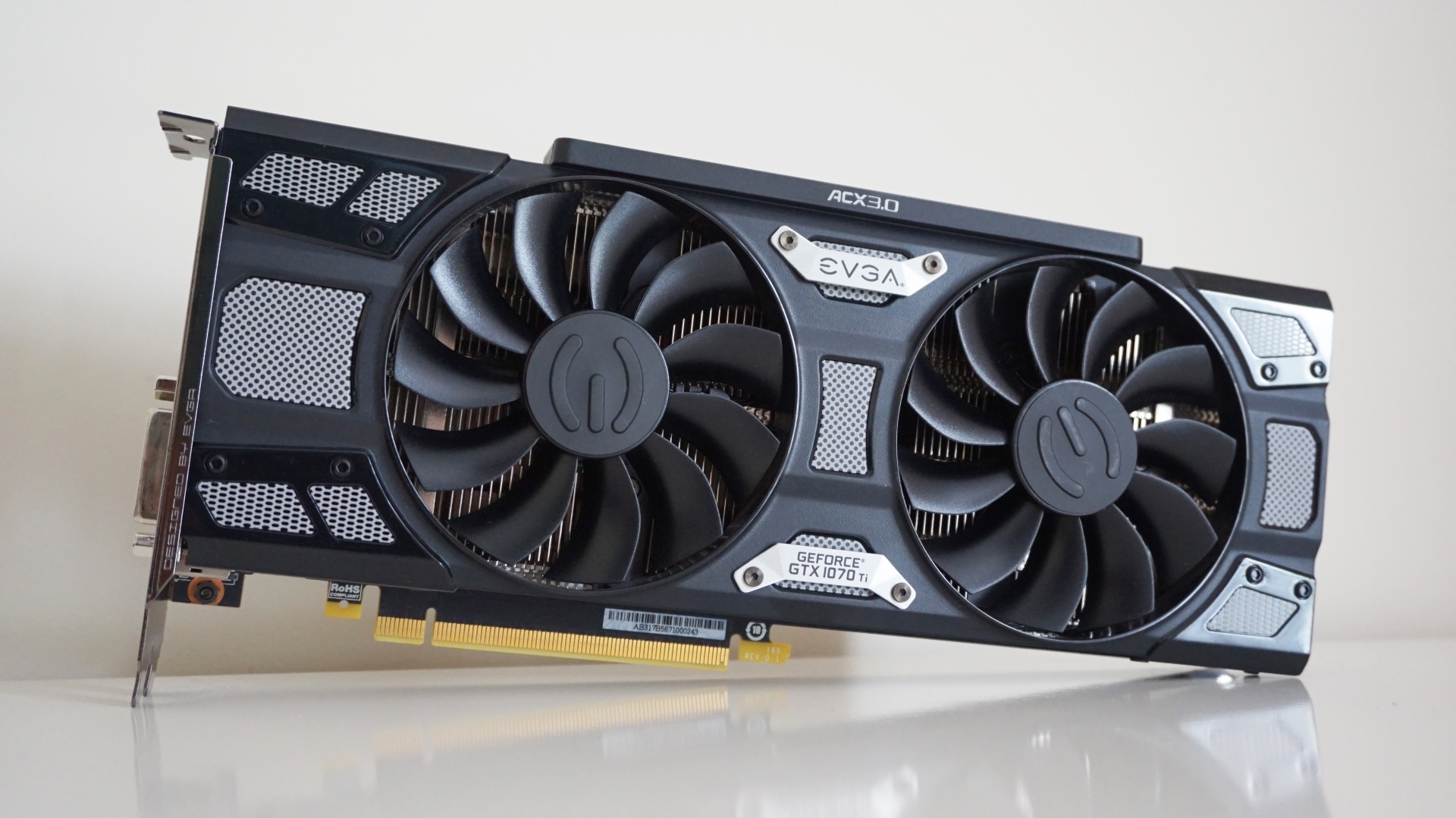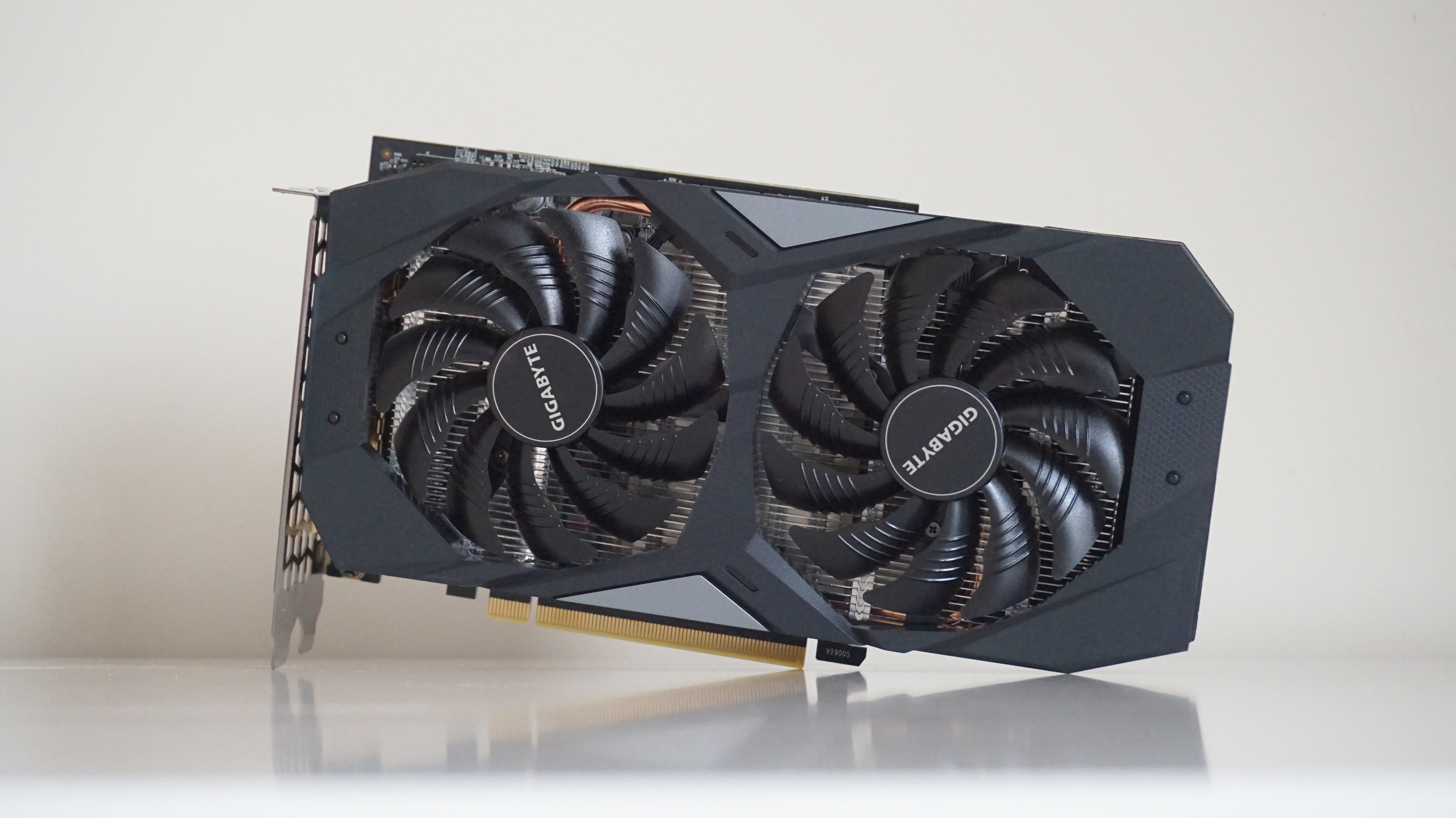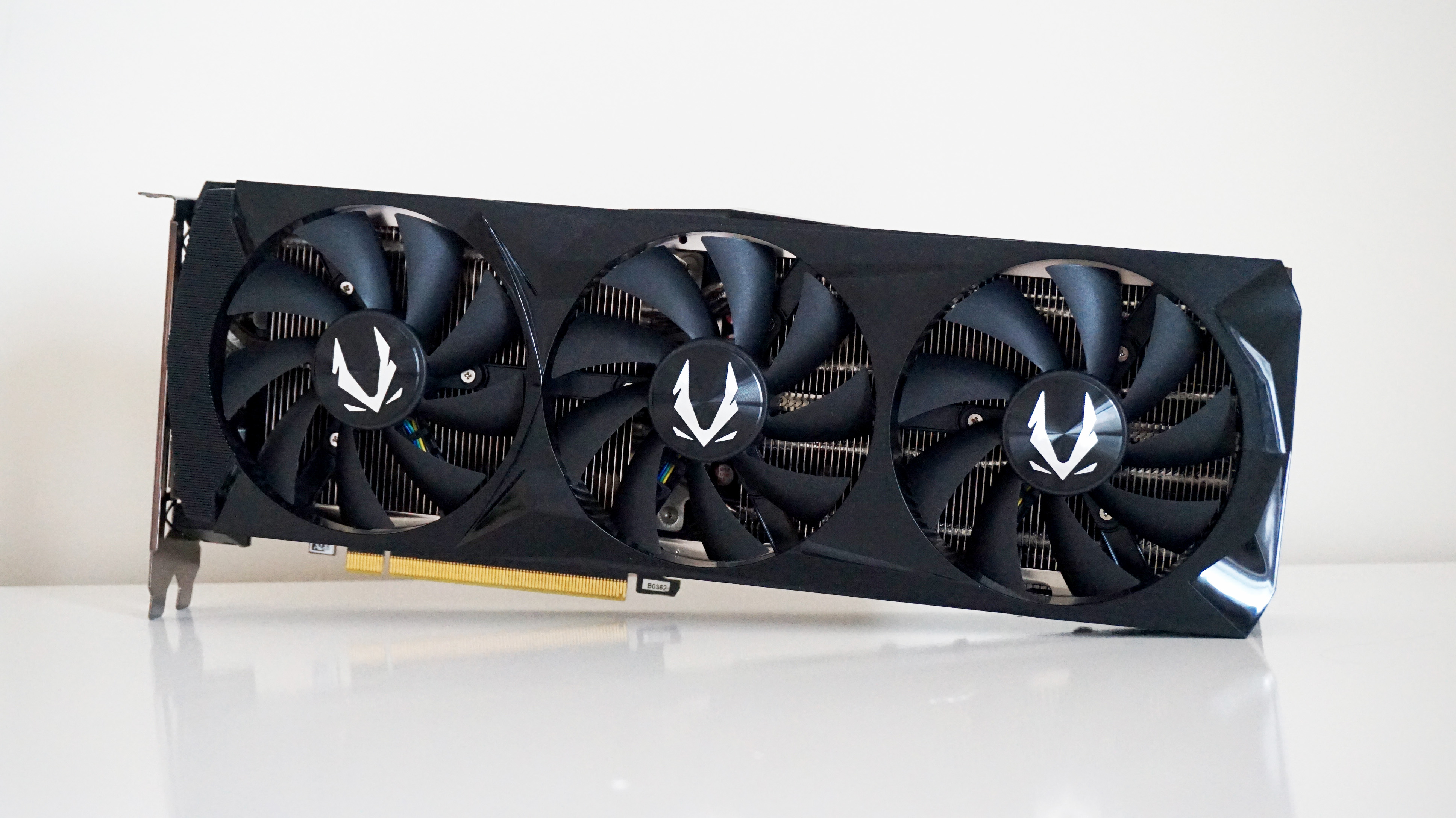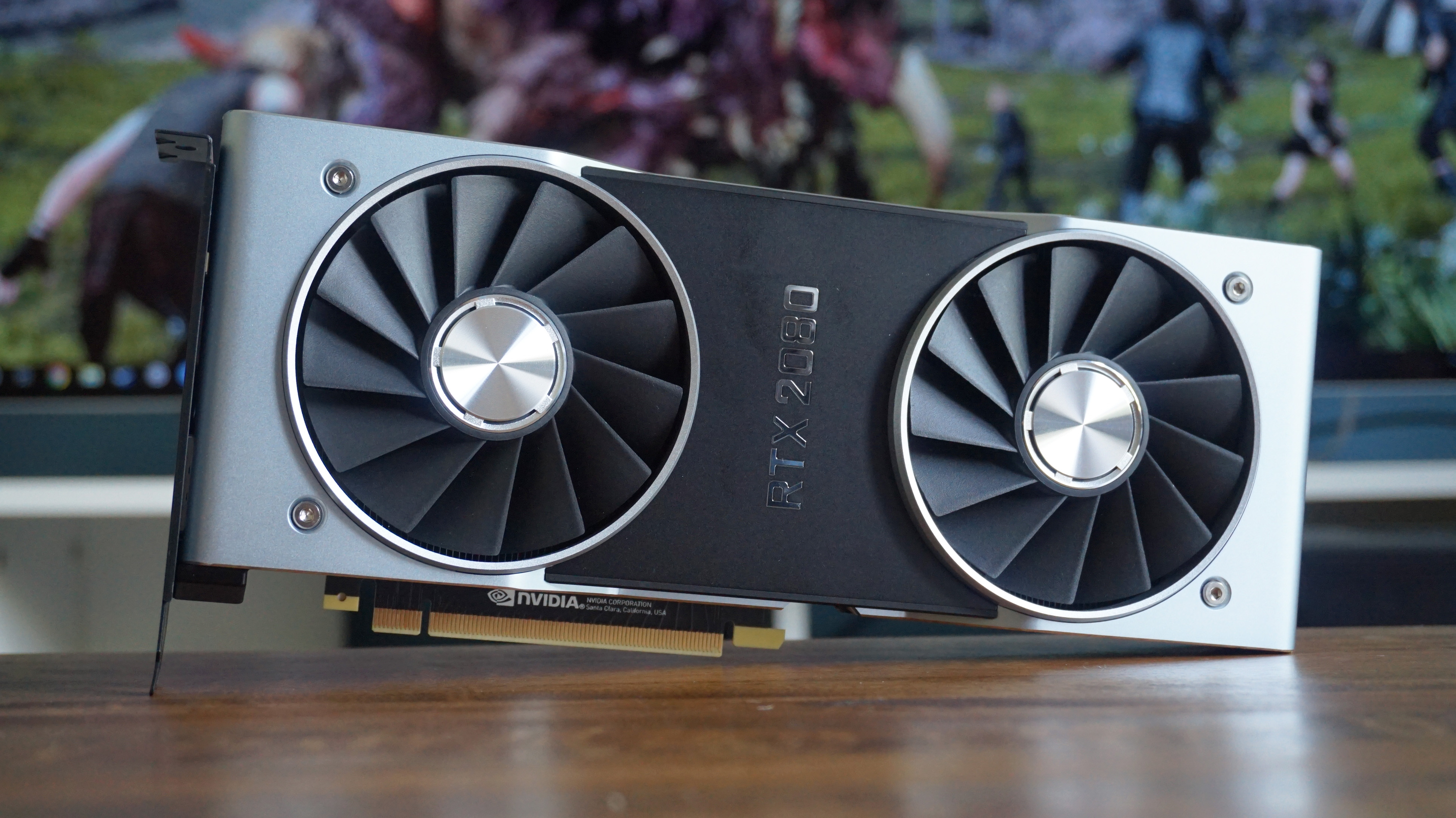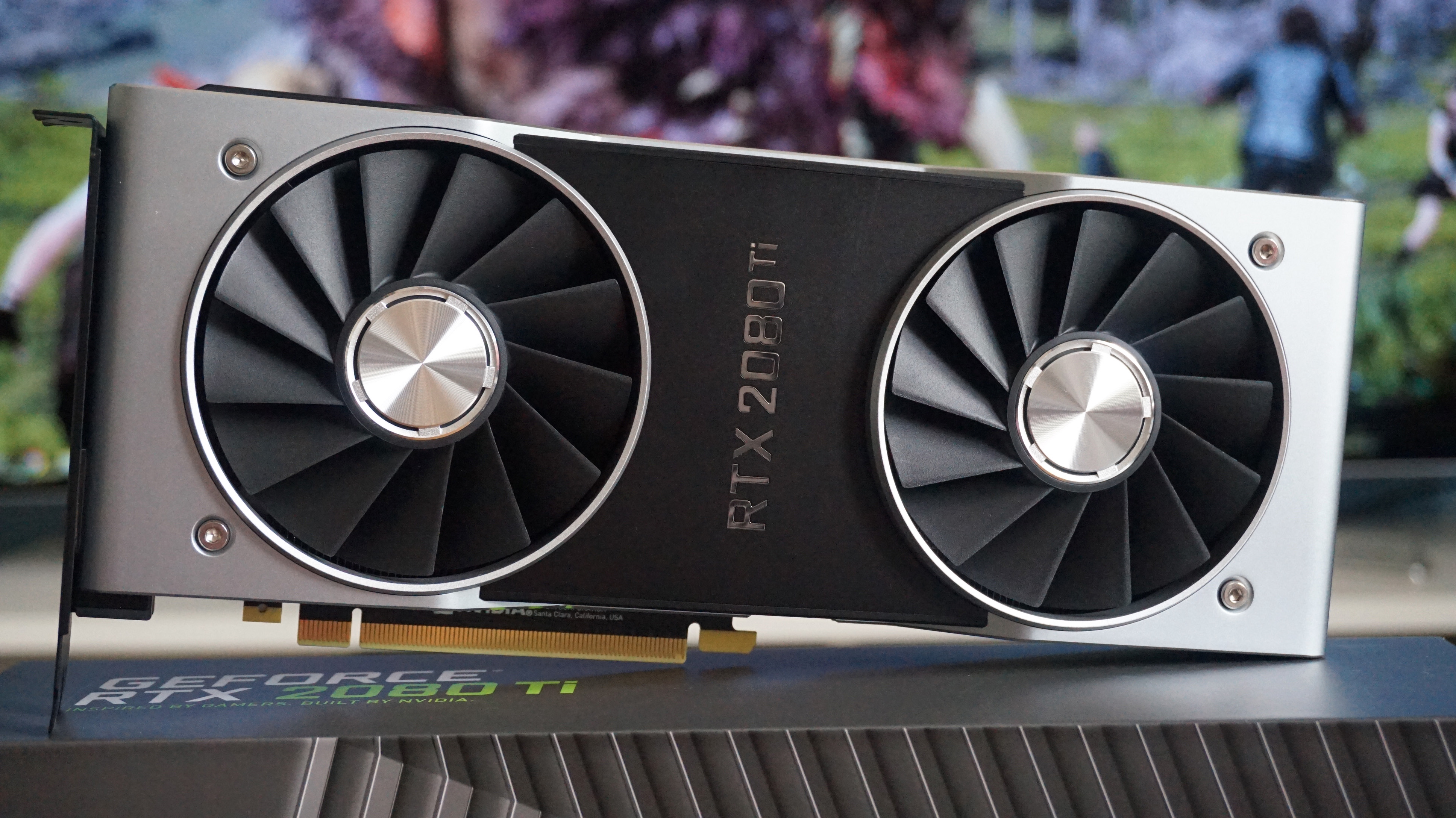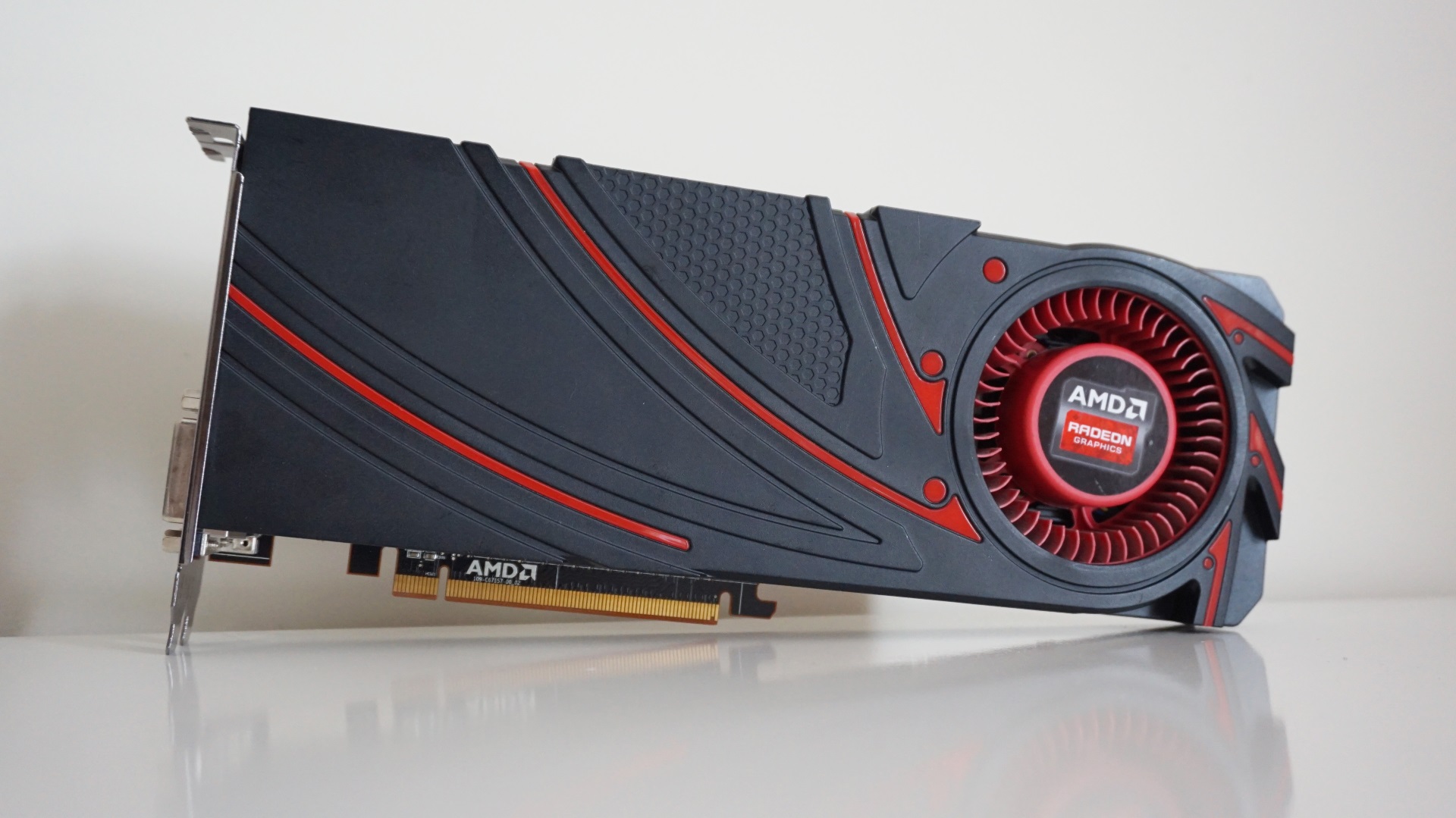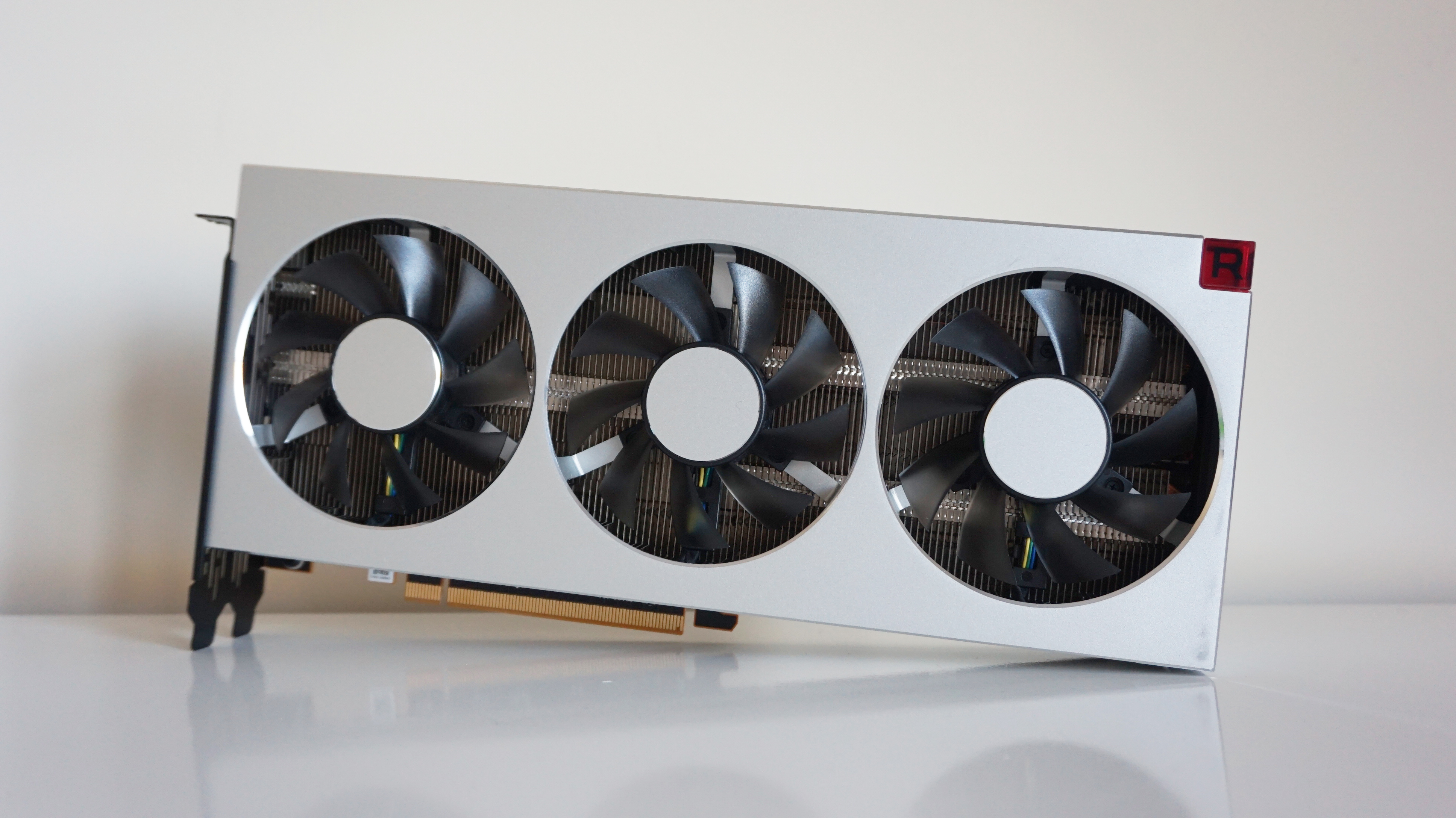Assassin's Creed Odyssey PC graphics performance: how to get the best settings
Kicking up a Spartan storm
The Assassin's Creed series has always been a tough nut to crack on PC. The latest Ancient Greek-themed instalment, Assassin's Creed Odyssey, may be slightly easier to run than its Egyptian predecessor, Assassin's Creed Oranges, but there are still times when it can feel like it's delivering a great big Spartan kick-sized strain on your trusty GPU. Fortunately, I'm here to help, as I've been testing every graphics card under Apollo's roasting hot sun to see how to get the best settings and the best performance in Assassin's Creed Odyssey across a variety of resolutions.
Freshly updated with more of today's best graphics cards than ever before, you'll find everything you need to know here about how to get a lovely 60fps frame rate, and what quality settings you'll need in order need to get it. Whether you're here for its brand-new Fate of Atlantis DLC, hoofing lads off cliffs or the blush-worthy romances, here's how to get the game looking as buff as the almighty Kassandra herself.
Assassin's Creed Odyssey PC requirements
In terms of minimum and recommended specs for Assassin's Creed Odyssey, Ubisoft have been a bit cautious this time round. The minimum spec, they say, is intended for use on the Lowest quality preset at a resolution of 1280x720, while their recommended set of components are for High quality at 1920x1080.
Both, however, are targeting a frame rate of just 30fps, which isn't exactly useful if you're after something closer to 60fps. Fortunately, you're in the right place if you're after 60fps, as I've tested every graphics card I've been able to lay my hands on to see what settings you need to get that elusive frame rate.
It's also worth pointing out that Ubisoft also have a recommended 4K configuration for Assassin's Creed Odyssey, which you'll find listed below, but once again this is targeting 30fps on High quality settings. If you're after 60fps at 4K, I've got you covered.
Minimum specs:
OS: Windows 7-10 64-bit
Processor: Intel Core i5-2400 / AMD Ryzen 3 1200 / AMD FX 6300
RAM: 8GB
Graphics: Nvidia GeForce 660 / AMD Radeon R9 285
Video memory: 2GB
Recommended specs:
OS: Windows 7-10 64-bit
Processor: Intel Core i7-3700 / AMD Ryzen 5 1400 / AMD FX-8350
RAM: 8GB
Graphics: Nvidia GeForce GTX 970 / AMD Radeon R9 290
Video memory: 4GB
Recommended 4K specs:
OS: Windows 10 64-bit
Processor: Intel Core i7-7700 / AMD Ryzen 7 1700X
RAM: 16GB
Graphics: Nvidia GeForce GTX 1080 / AMD Radeon RX Vega 64
Video memory: 8GB
As mentioned above, the aim here is to get Assassin's Creed Odyssey running at 60fps at 1920x1080, 2560x1440 and 4K. The good news is that Odyssey seems to be slightly better optimised for PC than Origins was, as I saw an improvement of around 5fps between both games on each card. As such, if your graphics card struggled a bit with Origins, it should run Odyssey slightly better.
To test each card, I used the game's built-in benchmarking tool, which sees the camera swooping through one of the game's many crowded towns while it's raining. There are plenty of NPCs and bits of environment to tackle, and I found the average frame rate it spits out at the end roughly matches what I experienced in-game as well.

I say roughly, as in a lot of cases, the average frame rate was perhaps a touch higher than the in-game speeds I experienced (the beginning of the benchmark begins inside, for instance, which produced universally higher speeds than the bits taking place outside, potentially skewing the results slightly), but I've also made note of how much the game dips below that average to hopefully give a more accurate picture of what you can expect.
Assassin's Creed Odyssey: how to get the best settings and performance
I stuck with the game's preset quality settings during my tests, but there are plenty of options available to help improve your PC's performance if you're finding it's struggling to keep a steady frame rate.
One of the most helpful features is switching on the Adaptive Quality setting. This kicks in when your frame rate drops below either 30fps, 45fps or 60fps (depending on which one you pick) and dynamically adjusts the game's anti-aliasing (or edge-smoothening tech) to help push the frame rate back up.
I'd also recommend adjusting the game's Shadows setting too, as this is another one that has a big impact on performance. Helpfully, Ubisoft's settings menu shows you exactly what each option does in-game via a small picture, so you can see exactly what effect it will have without having to boot up the game first.
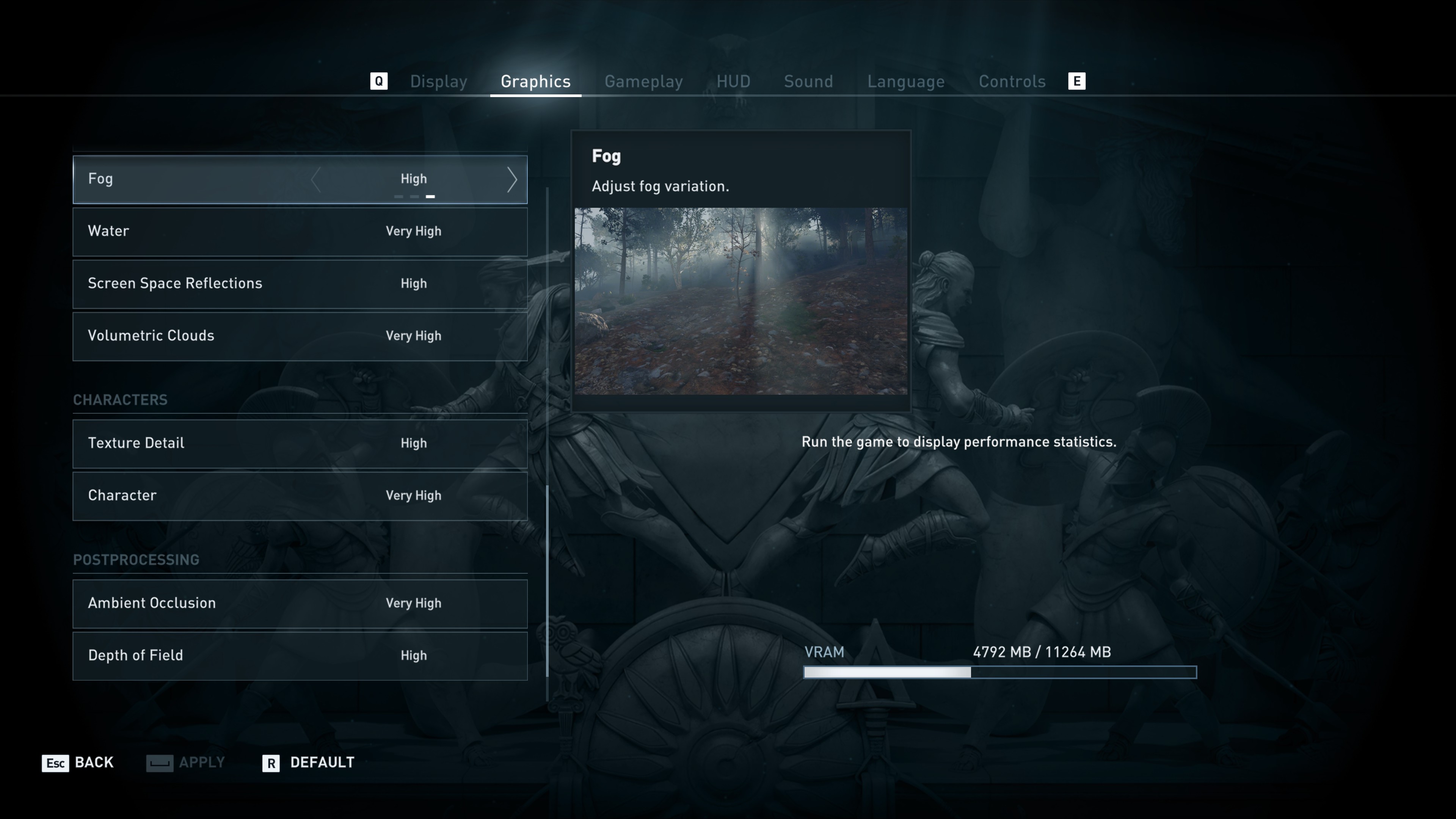
You can probably get away with cutting back on the Environmental Texture Detail, too, as the difference between Low and High is pretty small. I'd recommend keeping it as high as you can in the Character menu, though, as you're going to be spending a lot more time scrutinizing the backs of Kassandra and Alexios and their wonderful sets of colourful armour than you are a bunch of walls.
Depth of Field also affects performance, so knock it down to Low or turn it off completely if you're still finding the game chugs a bit. Turning it off will bring all objects into focus, while low blurs stuff further away, but I don't think it's something you're really going to notice in the grand scheme of things.
It's also worth noting that you can set an FPS limit in the Display menu as well if you want to keep the frame rate as steady as possible. You've got plenty of options, too, as the limit goes from 30fps right up to 90fps in 5fps increments, giving you loads of choice depending on what kind of graphics card you have.
Assassin's Creed Odyssey PC graphics performance
With all that in mind, let's Sparta-kick our way to some of them there graphics cards. Just click the links below to see how each graphics card fared. For the record, my PC had an Intel Core i5-8600K clocked at 3.6GHz and 16GB of RAM inside it, plus all the latest graphics drivers and Windows 10 updates installed.
- Nvidia GeForce GTX 970
- Nvidia GeForce GTX 1050 Ti
- Nvidia GeForce GTX 1060 (6GB)
- Nvidia GeForce GTX 1070
- Nvidia GeForce GTX 1070 Ti
- Nvidia GeForce GTX 1660
- Nvidia GeForce GTX 1660 Ti
- Nvidia GeForce RTX 2060
- Nvidia GeForce RTX 2070
- Nvidia GeForce RTX 2080
- Nvidia GeForce RTX 2080 Ti
- AMD Radeon R9 270
- AMD Radeon R9 290
- AMD Radeon RX 580 (8GB)
- AMD Radeon RX 590
- AMD Radeon RX Vega 64
- AMD Radeon 7
Nvidia GeForce GTX 970
Ubisoft say the Nvidia GeForce GTX 970 should be able to do around 30fps on High at 1920x1080 in Assassin's Creed Odyssey, but I'm pleased to report that's a rather conservative estimate according to my results, as this card performed much better than that when I ran it through the game's benchmarking tool.
It helps that the card's still got 4GB of memory to its name, helping it cope with all of Odyssey's various textures and graphical effects much better than older cards that might only have 2GB of memory, for instance. Zotac's Dual Fan version is also a little faster than Nvidia's reference spec for the GTX 970, with a base and boost clock speed of 1076MHz and 1216MHz respectively, so some results may vary a bit depending on what kind of card you have. However, I'm confident this one should still be broadly representative of what a GTX 970 can do in Odyssey, and hopefully you'll be able to get just as good performance out of your own version of this card as I did with mine.
Can I play this at 1920x1080?
You can indeed. The GTX 970 performed well across all of Assassin's Creed Odyssey's quality presets, with High yielding a very comfortable 50fps average. It spent a lot of time in the benchmark hovering around the 45fps mark, but that's still a lot higher than Ubisoft's 30fps estimate on this preset. Indeed, the GTX 970 was only really limited to 30fps when I stuck it on Ultra High at this resolution, garnering an average of 31fps and a minimum of 22fps.
I probably wouldn't recommend playing on this setting with a GTX 970, but you can still get a very admirable 41fps average by opting for Very High instead. There were a few stutters here where the frame rate dropped to around 20fps again, but they were by and large pretty rare.
If you're after the full 60fps, however, your best bet is to play on Medium. Again, the frame rate still dipped as low as 34fps on occasion, with a fair amount of the benchmark spent below 60fps, but I'd take Medium over Low any day if I could possibly help it.
Can I play this at 2560x1440?
Surprisingly, yes. Low, naturally, produces the best results at this resolution, offering an average frame rate of 50fps, but Medium will still net you a very playable 44fps average. Push it up to high and you're looking closer to 37fps, but that's still mighty impressive for such an elderly card.
Can I play this at 4K?
Alas, even Low is too much for the GTX 970 at this resolution, spitting out an average of just 29fps with frequent drops to the low 20s. It's stable, just about, but you'll get a much smoother experience at lower resolutions and better graphics settings.
Nvidia GeForce GTX 1050 Ti
Despite having fewer CUDA cores than the GTX 970, the 4GB version of Nvidia's GeForce GTX 1050Ti puts up an admirable fight in the face of Assassin's Creed Odyssey's mighty graphics settings. I doubt the 2GB models of this card would fare as well, as the game's memory requirements only get bigger and bigger as you go further up the quality ladder. However, those with 4GB GTX 1050Tis should still get a pretty decent experience at 1920x1080 provided you don't mind making a couple of compromises.
What's more, you might even get better results than what I've listed below, as Palit's Storm X model isn't actually clocked as fast as some of the other GTX 1050Tis out there. With a base and boost clock speed of 1290MHz and 1392MHz respectively, it's a touch slower than lot of its competitors, many of which have a base clock of at least 1300MHz and a boost clock speed up in the high 1400MHzs. As such, this is probably the base line experience you can expect from the GTX 1050Ti, and faster cards may well be able to push the frame rates detailed below even higher.
Can I play this at 1920x1080?
Yes indeed. Much like the GTX 970, the GTX 1050Ti is more than capable of handling Assassin's Creed Odyssey at this resolution, although those after a perfect 60fps will have to settle for Low to get the smoothest frame rates.
However, I still recorded a respectable average of 49fps on Medium with the GTX 1050Ti, and a very playable average of 41fps on High, so you needn't limit yourself to Low if you don't mind sacrificing the frame rate a bit for superior graphical fidelity. Indeed, things only really started to get choppy when I pushed the quality up to Very High. Here, the benchmark's average frame rate dropped to 35fps and I saw quite a few major stutters as well where the frame rate tumbled as low as 16fps. High, on the other hand, was much more stable, so stick with this if you favour prettiness over speed.
Can I play this at 2560x1440?
Just about, but you'll have to play on Low to get the best speeds. Here, I saw an average frame rate of 41fps in the benchmark, whereas Medium saw it drop down to 34fps. The latter spent most of its time above 30fps, but there were still a couple of bumps down to 25fps. You could probably get away with it if you set the FPS Limit to 30fps, but I think Low will serve you much better at this resolution.
Can I play this at 4K?
Unfortunately not. Even on Low, the GTX 1050Ti barely managed to keep its head above 20fps in the game's benchmark, frequently dropping as low as 18fps. I doubt you'd have a 4K monitor if you've only got a GTX 1050Ti, but if you were hoping to hook your PC up to a 4K TV for this one, you might want to reconsider.
Nvidia GeForce GTX 1060
Ah, the trusty Nvidia GeForce GTX 1060. It might have had its thunder stolen a bit recently by Nvidia's new GTX 1660 and GTX 1660 Ti, but this is still a mighty fine graphics card in its own right.
Truth be told, the Asus GeForce GTX 1060 OC 9Gbps Edition I've tested isn't actually available to buy any more, but when it was available, it was definitely one of the higher-end versions of the card that was ever produced thanks to its boost clock speed of 1809MHz. Indeed, there are only two other models with faster boost speeds than Asus' OC 9Gbps card, so the results below should probably be taken as a kind of best case scenario for the 6GB GTX 1060 than anything else. Still, regardless of whether you own one of the top-end GTX 1060s or one of the cheaper ones, there's still plenty of good news here for those aiming to play at 1080p.
Can I play this at 1920x1080?
Yes indeed. While Ultra High is probably just outside the GTX 1060's capabilities, Very High will net you a rather lovely average of 54fps. High will push that even further up to 63fps, but personally I think an average of 54fps on Very High is going to feel just as nippy as getting a steady 60fps on regular High.
Can I play this at 2560x1440?
Sort of, but Medium is about as good as it's going to get with the GTX 1060, thanks to an average of 55fps. High is probably just about feasible with its average of 47fps, but you're also running the risk of some dips down to 25fps here and there, so I'd recommend sticking with Medium for the smoothest performance.
Can I play this at 4K?
Alas, unless you want to simulate Zeus zapping your GTX 1060 with a lightning bolt, get that resolution setting back down to 1080p, you hear?
Nvidia GeForce GTX 1070
Now we're talking. With 8GB of VRAM to its name, the Nvidia GeForce GTX 1070 is much better equipped to deal with everything Assassin's Creed Odyssey has hiding up its buff Spartan toga. Admittedly, Asus' souped-up ROG Strix Gaming edition of the GTX 1070 is one of the faster cards of this type you can buy at the moment, so some results may be a touch faster than other, slightly slower GTX 1070s out there.
With a base clock speed of 1632MHz and a boost clock speed of 1835MHz, this GTX 1070 is probably a best-case scenario of what to expect from this particular card, but regardless of how fast your own GTX 1070 is, I suspect you're still going to have a grand old time here at both 1920x1080 and 2560x1440, with even a touch of 4K possible as well.
Can I play this at 1920x1080?
Absolutely. Ultra High will set you back to an average of 48fps, but Very High will net you a glorious 61fps average. I saw a couple of jolts down to 28fps in the latter, all told, but this seems to be the case across every single run I did with every single graphics card, so I wouldn't put too much stock in it.
If you really want to be sure you're getting an absolutely flawless 60fps, however, then knock it down to High. Here, the benchmark hovered much closer to the 60fps mark, producing an average of 68fps overall. Again, the lowest it went was 31fps, but these dips were few and far between.
Can I play this at 2560x1440?
Sure thing. Medium will get you closest to 60fps at this resolution, with the benchmark averaging 65fps overall, but those after more of those pretty graphics will probably be just as comfortable on High. Here, I saw an average of 54fps, and that only dropped down to an average of 50fps when I bumped the quality up to Very High, too.
In truth, you could probably get away with Ultra High if you don't mind settling for an average frame rate of 43fps, as this was still perfectly playable and, more importantly, pretty stable throughout.
Can I play this at 4K?
Yes, but with a couple of compromises. Play on Low and you'll see an average of 47fps, where the frame rate never dipped below 32fps, but Medium still has potential with its average of 39fps. The latter did occasionally fall to 26fps, but most of the time the benchmark stayed well above 30fps, so you should still get a decent experience out of it for the most part.
High is just about manageable, too, with an average of 33fps, but things started to get a bit choppy here, so you'll be much better off sticking with one of the lower quality presets here, or simply opting for even better graphics at a lower resolution.
Nvidia GeForce GTX 1070 Ti
The Nvidia GeForce GTX 1070 Ti is a much easier beast to predict than some of the other cards on this list, if only because Nvidia decided they wouldn't let third party manufacturers factory-overclock their own versions of the card when it came out at the tail-end of 2017, presumably so it wouldn't start eating into their coveted Nvidia GeForce GTX 1080 territory. As such, the base and boost clock speeds of 1607MHz and 1683MHz on this SC Gaming model from EVGA should paint a pretty much identical picture across all sorts of GTX 1070Ti cards you might currently have in your PC.
In truth, EVGA's model can technically skirt around Nvidia's weird rule using its Precision Boost software to help 'optimise' it to the absolute best of its ability, but for the sake of science, I've left the card as is for this test to keep things nice and fair. And hoo boy is it a good partner for Assassin's Creed Odyssey.
Can I play this at 1920x1080?
You sure can. Compared to the regular Nvidia GeForce GTX 1070, the GTX 1070Ti pretty much gives you equivalent speeds one quality setting up. On Very High, for instance, I got an average frame rate of 64fps, in the game's internal benchmark, making the game feel just that bit smoother than its non-Ti counterpart on the same setting.
Ultra High produced great results, too, averaging 55fps overall. If anything, it was Ultra High that produced the most stable, accurate frame rate, as Very High still spent quite a bit of time below 60fps according to the benchmark's results graph. Still, regardless of whether you end up picking Very or Ultra High quality, you're still getting one good looking game at near-perfect speed.
Can I play this at 2560x1440?
Yep, and you can pretty much pick from any of the three 'High' settings and still get a lovely smooth frame rate. On regular High, the benchmark finished with an average of 59fps, rarely dipping below 45fps, while Very High came out with an average of just 54fps. There were a couple of major stutters in the latter, admittedly, but otherwise it was perfectly stable.
Ultra High was pretty lovely at this resolution as well, coming in with an overall average of 46fps and hardly ever going below 30fps. If you'd rather have gorgeous visuals over a high frame rate, this is the setting to choose.
Can I play this at 4K?
Yes! As with other cards I've tested, Low will get you the closest to 60fps with an average of 50fps, but Medium and even High are also playable at this resolution, too. Medium is probably the best bet here, as this produced an overall average of 43fps with an absolute low of 28fps, but those after the best-looking version of Assassin's Creed Odyssey with this card should still have a decent experience on High.
Admittedly, you're only looking at an average of 36fps on High, but while the benchmark's lowest recorded frame rate was 24fps, it spent the majority of its time comfortably above 30fps. That's still pretty impressive in my books, particularly at this resolution, but those after smoother speeds should stick with Medium.
Nvidia GeForce GTX 1660
My current recommendation for the best graphics card you should actually buy for 1080p gaming, the Nvidia GeForce GTX 1660 is a true force to be reckoned with at just £200 / $220, and it makes a mighty fine partner for Assassin's Creed Odyssey, too - the Ikaros of today's lower-end graphics cards, so to speak.
Indeed, the Gigabyte OC edition I've got on test is one of the cheapest GTX 1660s out there at the moment, and thus the results below should offer a pretty good baseline for what to expect speed-wise. With 6GB of GDDR5 memory to hand and a boost clock speed of 1830MHz, this is one of the best experiences you're going to get around the £200 / $200 mark right now - although I'll also be adding in Nvidia's newly-announced GTX 1650 very soon as well to see how that fares by comparison.
Can I play this at 1920x1080?
Certainly. For that perfect Midas touch of a golden 60fps, Very High and its average of 62fps is going to be your best bet here, but I reckon Ultra High's average of 48fps is also highly doable for those who want to get the absolute best out of their 1080p monitor. I did see a couple of stutters down to the mid-20s, all told, but for the most part it was absolutely fine.
Can I play this at 2560x1440?
You sure can, although I'd advise sticking to Medium here and its average of 62fps for the smoothest ride. You can try pushing it up to High if you're desperate, but even though I saw an average of 53fps on this setting, I also recorded a couple of quite major dips all the way down to 19fps as well, which isn't exactly ideal.
Can I play this at 4K?
It's doable, but you'll start to feel the petrifying effects of Medusa's snake buds if you try anything higher than Low, which produced an average of 47fps in the game's benchmark. Medium and its average of 36fps is doable, save for the odd sub-20fps hitch now and again, but that's as good as it's going to get here.
Nvidia GeForce GTX 1660 Ti
Even though it doesn't have any of the cool RTX tech in it, the Nvidia GeForce GTX 1660 Ti is surprisingly powerful for a £260 / $279 GPU, which is why it's currently our top graphics card recommendation for playing games at 1080p in our best graphics card list, as well as the card you should actually buy for 1440p gaming if the RTX 2060 is too far out of your price range. And what a great match it makes for Assassin's Creed Odyssey, offering stunning frame rates at 1080p and 1440p alike.
I've got Asus' entry-level Phoenix card on test here, which is one of the cheapest GTX 1660 Ti cards around. As a result, the results below should be considered as an absolute baseline of what the GTX 1660 Ti is capable of in this game, and many faster varieties of this card should be able to offer even higher performance.
Can I play this at 1920x1080?
Does Zeus have two thumbs? You betcha, and you can even get a nice 53fps average on Ultra High too. You'll get slightly smoother speeds by knocking it down to Very High, admittedly, where I saw an average frame rate of 65fps, but those wanting to max out their 1080p monitors should be perfectly fine on the top setting here as well.
Can I play this at 2560x1440?
Time to strap on those Hermes sandals, friend, because yes you can. High will net you the nippiest speeds with an average of 60fps, but Very High managed a highly playable average of 50fps as well.
Can I play this at 4K?
Playing at this resolution might turn you into Ares, god of war, on occasion, but surprisingly, it is just about doable. Low is your safest bet here, thanks to an average of 52fps, but if you really want to push the GTX 1660 Ti to its limit, then you can also get an average of 44fps when playing on Medium. But really, why play with so-so graphics at 4K when you can get Aphrodite-levels of loveliness at 1080p or 1440p?
Nvidia GeForce RTX 2060
The current baby of the new RTX family, the Nvidia GeForce RTX 2060 is one of the best graphics cards around for 1440p gaming right now. Offering nigh-on identical speeds as the GTX 1070 Ti for a fraction of the price, the RTX 2060 is an excellent card for playing Assassin's Creed Odyssey.
I've got Nvidia's Founders Edition on test today, whose base and boost clock speeds of 1365MHz and 1680MHz are fairly typical of most other RTX 2060s you'll find out there. As a result, the results below should be the least you can expect from the RTX 2060, with faster versions of this card potentially offering even higher speeds.
Can I play this at 1920x1080?
Yep, and you can get a perfect 60fps average on Ultra High for your trouble, too.
Can I play this at 2560x1440?
Double yep. Very High will net you a very playable average of 59fps at this resolution, but if you're feeling daring then you could probably push it up to Ultra High for an average of 47fps if you wanted the absolute maximum fidelity levels. Be warned, though, as I still saw some dips to around 21fps in the game's benchmark, so you may need to knock it back down to Very High in places if it feels like it's struggling.
Can I play this at 4K?
Sort of yep. Low will give you an impressive average of 59fps, while Medium will get you a perfectly playable average of 49fps, but really, why insist on playing at 4K here when you'll get a much prettier-looking game playing at 1440p?
Nvidia GeForce RTX 2070
The Nvidia GeForce RTX 2070 is arguably the card that every potential RTX card owner aspires too. With GTX 1080-beating performance and all the shiny RTX tech inside it, it's currently one of the most affordable 4K-capable cards going - which is why it currently occupies the '4K card you should actually buy' spot in our best graphics card list.
Admittedly, Zotac's AMP edition of the RTX 2070 is one of the faster types of this cards out there at the moment, thanks to its high boost clock speed of 1860MHz, but hopefully the speeds below shouldn't be too out of line with other RTX 2070s currently available. Either way, this is an excellent companion for Assassin's Creed Odyssey at 1080p and 1440p, and can offer decent 4K speeds as well.
Can I play this at 1920x1080?
Absolutely. With an average of 63fps on Ultra High, you'll be absolutely laughing at this resolution.
Can I play this at 2560x1440?
You sure can. I found Very High's average of 67fps to be very pleasant here, but you could probably easily knock it up to Ultra High and still enjoy some very fine frame rates here.
Can I play this at 4K?
Absolutely sure-can-ativly. Medium will probably offer the smoothest frame rates at this resolution thanks to its average of 61fps, but I think High's 52fps average will probably do you just fine as well, really. Very High was also smooth on the whole with an average of 45fps, but I also saw some very big stutters down to 17fps a couple of times when the benchmark scene was at its busiest. As a result, I'd recommended sticking with High or Medium here.
Nvidia GeForce RTX 2080
Nvidia's Turing GPU may technically be the bees knees when it comes to fancy performance-boosting tech, but so far the RTX 2080 hasn't proved to be much faster than the Nvidia GeForce GTX 1080Ti. As such (and in the absence of an actual GTX 1080Ti to compare it with), you can probably assume the results below will be pretty much the same across both cards.
It's also worth pointing out that these results aren't likely to change once Turing's ray-tracing and DLSS features start to become more widely adopted, either. For not only is Assassin's Creed Odyssey not on the list of Nvidia's currently confirmed ray-tracing or DLSS games, but it's also unlikely to get any support for them in the future, too. That's because Ubisoft have instead teamed up with AMD to get a lot of their recent games looking extra nice and shiny, and Odyssey is no exception. I will, of course, update these results if Ubisoft do end up adding support for Nvidia's clever Turing bits and bobs, but it's certainly not going to happen in the foreseeable future.
Can I play this at 1920x1080?
You sure can. As you'd probably expect from a £700 / $750-odd graphics card, the RTX 2080 can pretty much run Assassin's Creed Odyssey at full pelt at this resolution. On Ultra High, you can expect an average frame rate of 58fps according to the benchmark, but you may well find it's more comfortable on Very High instead.
I say this, as the benchmark graph showed the RTX 2080 spent a fair amount of time below 60fps during my tests, whereas dropping it down to Very High saw a much more consistent 64fps average. This may be down to some bottlenecking happening with my CPU, though, as the RTX 2080 produced nigh-on identical results at 2560x1440 as well. Speaking of which…
Can I play this at 2560x1440?
Indeedy, and you can expect to see pretty much the same frame rates described above on the same graphics settings. Ultra High saw an average of 57fps when I ran it through the benchmark, despite spending most of its time in the region of 45-60fps, while Very High produce a much steadier 62fps average. Those with better CPUs may experience faster results than what I've described here, but even if you are being hampered slightly by your processor, at least you're still looking at getting near 60fps speeds with the very top quality settings.
Can I play this at 4K?
Absolutely, and you don't even need to settle for Low to get the most comfortable speeds either. Instead, Medium is as low as you need to go to get 60fps, as this produced an average of 65fps in the benchmark. However, you'll be equally comfortable on High with an average of 53fps, or even Very High with its average of 48fps.
For absolute perfection, you can even whack it up to Ultra High if you want, as here I still saw a perfectly playable average of 38fps. There were a couple of jolts where it tumbled as low as 14fps, but for the most part the game stayed well above 30fps. As a result, this should be highly feasible for those after the best graphics Odyssey has to offer.
Nvidia GeForce RTX 2080 Ti
Hands down the best graphics card available right now, the Nvidia GeForce RTX2080Ti was the one delivering the Spartan kicks here, not the game. With a whopping 11GB of memory to its name, the RTX 2080Ti is more than capable of handling Assassin's Creed Odyssey at top speeds across all three resolutions. Here's how it got on:
Can I play this at 1920x1080?
Without a doubt. Whack it up to Ultra High and live like a king. Admittedly, the benchmark still only returned an average frame rate of 59fps on this particular quality settings, but I suspect that's more to do with my CPU not being able to keep up with the number of frames it's spitting out. That won't be a problem if you've only got a 60Hz monitor, of course, but I'll update these results once I get a better CPU in for testing to see if high refresh rate screen owners will be able to make use of any extra frames.
Can I play this at 2560x1440?
Yep yep, and once again you can dial it up to Ultra High without even a whiff of a struggle. Here, the benchmark produced another fine average of 59fps, but you can always squeeze a few extra frames out of it (for an average of 64fps) by dropping down to Very High instead. Again, I think my CPU may be holding it back here, but needless to say, this card is more than capable of delivering 60fps+ speeds at this resolution, even when it is being bottlenecked by your processor.
Can I play this at 4K?
I'd jolly well hope so if I'd paid north of a grand for this card. Fortunately, the RTX 2080Ti absolutely delivers on this front, and you can play this beaut at the toppest top settings. Despite the aforementioned CPU problems, I still got an excellent 54fps average on Ultra High at 4K, despite a fair amount of variation down to 30fps at times, but that's nothing the Adaptive Quality setting won't be able to sort out to help keep frame rates nice and smooth.
In fact, I only managed to improve the average by a single frame by dropping down to Very High, which produced just as much variation, probably again due to the CPU. Still, if you've got an RTX 2080Ti and want the absolute best of the best in Assassin's Creed Odyssey, this is the card to do it.
AMD Radeon R9 270
Aww, the poor R9 270. This one didn't even make it onto Ubisoft's minimum spec recommendation this time, as the lowest AMD card they recommended for 30fps play on Low at 1280x720 was the R9 285. That's not to say Assassin's Creed Odyssey is completely unplayable with this card, but it's certainly not the best, either.
It doesn't help that the R9 270 only has a measly 2GB of memory to play with, which gets filled up pretty fast by all of its demanding special effects. Still, you can just about get playable speeds at 1920x1080, but it ain't pretty, that's for sure.
Can I play this at 1920x1080?
Barely, but it's doable as long as you're willing to put up with the Low preset. Here, the benchmark gave me an average frame rate of 38fps at this resolution, which is still perfectly playable if you ask me. Just don't push it up to Medium, as despite returning an average of 32fps, the frame rate often veered all the way down to a chuggy 20fps.
If you want faster frame rates than this, you're going to have to settle for a lower resolution, I'm afraid.
Can I play this at 2560x1440?
Did you read what I just said about only being able to play it on Low at 1080p? Hush now and we'll never speak of this again.
Can I play this at 4K?
*Kassandra laughs at your feeble graphics card and boots it off the nearest cliff.*
AMD Radeon R9 290
The AMD Radeon R9 290 was another one of Ubisoft's recommended spec cards for 30fps play at 1920x1080 on High, but whereas the GTX 970 went above and beyond those expectations, they sadly proved to be a lot more accurate for the old R9 290. It's a shame, really, as the R9 290 still has 4GB of RAM to handle all of Assassin's Creed Odyssey's memory-hogging effects, but this reference model from AMD is probably let down by its slower base clock speed of just 947MHz.
Still, despite posting slower speeds than the GTX 970, you can still get a pretty decent experience out of the R9 290, both at 1920x1080 and even a bit of 2560x1440 if you fancy it.
Can I play this at 1920x1080?
Yes, but getting a full 60fps is going to be tricky. Medium is probably your best bet for balancing speed against graphical prettiness, as here I saw a very steady average frame rate of 42fps, but even dropping it down to Low will only push that up to an average of 49fps. As such, that's the best you're going to get at this resolution, unless you take a hammer to whatever graphics settings you're still able to change, that is.
Still, for those who want a slightly prettier game, you can probably just about get away with High if you don't mind a frame rate closer to 30fps. Here, the benchmark produced an average of 36fps with a couple of drops down to 21fps, but the latter were pretty fleeting when they did happen, and it almost always instantly recovered back up to the 30fps mark straight after. Go any higher, though, and the game starts to become a juddering mess.
Can I play this at 2560x1440?
Just about, but Medium is the best it's going to get at this resolution. Here, you're looking at an average frame rate of 35fps at this resolution, with only a couple of drops below that all-important 30fps line. Your best bet, though, is to stick with Low, which saw an average of 39fps.
Can I play this at 4K?
Alas not. Much like the GTX 970, 4K is just a little too much for the R9 290, even on its lowest setting. Stick with 1920x1080 for this card and you'll be much happier.
AMD Radeon RX 580
AMD's Radeon RX 580 is still one of our best graphics card recommendations for playing games at 1080p, but with games like Assassin's Creed Odyssey now starting to become the norm, it's definitely starting to show its age a bit. Still, the RX 580 can still get some pretty decent speeds if you're willing to compromise on graphical fidelity a bit.
This particular version is PowerColor's 8GB Red Dragon edition, which has a boost clock speed of 1380MHz. This puts it at the upper-end of current RX 580s out there, but some results may be a bit faster than what you can get on slightly slower versions of this card. However, I'm confident these results should still be pretty typical of what the RX 580's capable of, even if your own card has a slightly slower boost clock speed.
Can I play this at 1920x1080?
Yes, but you'll have to settle for Medium or High to get the fastest speeds. On Medium you're looking at a super smooth average of 64fps, while High nets you 52fps - which is also perfectly playable and was actually more stable in the game's internal benchmark than playing on Medium. Very High is also manageable with its average of 46fps, but really, I'd recommended sticking to regular High if you want the best balance between speed and pretty graphics.
Can I play this at 2560x1440?
Sort of, but Medium is definitely as high as you're going to go here, as this averaged 50fps when I ran it through the benchmark. You can try bumping it to High if you feel like it, as this averaged 39fps, but I also saw some worryingly chugging lows of 25fps from time to time when the benchmark's town scene got particularly busy. As such, I'd recommended sticking to Medium here unless you want to try some of the speed-boosting tricks I've outlined above.
Can I play this at 4K?
Nu-uh. Unless you want to send our RX 580 on a journey down the River Styx, this resolution is best forgotten.
AMD Radeon RX 590
Yes, it's another AMD PowerColor card here, only this time it's AMD's Radeon RX 590. Quite possibly one of the largest graphics cards in my GPU pile, this buffed up red devil is quite the chunker.
However, underneath all that bulk is a fairly average incarnation the RX 590, with its boost clock speed of 1576MHz putting it right in the middle of what's currently available from other third-party cards. Still, with 8GB of memory to its name and some hefty cooling apparatus, the RX 590 is still a good choice for playing Assassin's Creed Odyssey at 1080p, even if it isn't quite as fast as Nvidia's GeForce GTX 1060.
Can I play this at 1920x1080?
Absolutely, but the very highest quality settings are likely to be out of reach here, even for the RX 590. Medium will get you that constant silky smooth 60fps with its average of 69fps, but I reckon High or Very High are also doable here with their respective averages of 55fps and 51fps. You might see a couple of sub-30fps jolts when the action gets particularly busy on these quality settings, but on the whole you should still see some pretty decent speeds.
Can I play this at 2560x1440?
Also yes, but Medium is almost certainly going to be the absolute limit at this resolution for those after the smoothest possible speeds. Here, I saw a steady average of 53fps, but bumping it up to High pushed that figure back down to 43fps. It's playable, certainly, but not quite as effortless as playing on Medium.
Can I play this at 4K?
Alas, no. Even on Low, the RX 590 only managed an average of 38fps here, with two big sub 20-fps dips when town got particularly busy. Stick to 1440p or 1080p with this card.
AMD Radeon RX Vega 64
AMD's Radeon RX Vega 64 has since been supplanted by the Radeon 7 as AMD's bestest best graphics card, but that's not to say the Vega 64 isn't still an excellent companion for Assassin's Creed Odyssey. In fact, AMD's ongoing driver updates for the game have seen the card's performance improve massively since it first came out, showing boosts of between 8-10fps over my very first test results for the game.
Admittedly, the Sapphire Nitro+ edition of the Vega 64 I've used for testing isn't actually available to buy any more, it would appear, but other Vega 64 models should show similar improvements. Perhaps not quite as much as the Nitro+, all told, thanks to its higher than average boost clock speed of 1611MHz, but I'm confident that the speeds below should be broadly representative of what every current Vega 64 should be able to achieve.
Can I play this at 1920x1080?
Can Kassandra hoof a load of lads off a cliff? Of course you can. Ultra High will get you a lovely average of at least 58fps these days, which is one heck of an improvement over its initial result of just 50fps. If you want to be absolutely certain of a smooth 60fps at all times, though, then you'll need to drop it down to Very High for an average of 63fps.
Can I play this at 2560x1440?
Can Kassandra smooch her way across Ancient Greece? Yes ma'am. Here, Very High is probably your best bet, as its average of 59fps is going to be a lot smoother and easier on the eyes than Ultra High's average of 50fps. Still, even Ultra High never went below 30fps in the game's internal benchmark, so it should be able to cope with busier scenes perfectly well without feeling like it, too, has been hoofed off a cliff with a Spartan kick.
Can I play this at 4K?
Can Kassandra hoof lads off cliffs while smooching her way across Ancient Greece? Err...no, but having spent nearly 90 hours in her company she probably could - and would. And yes, you probably can just about play Assassin's Creed Odyssey at 4K with the Vega 64, but Medium is probably as good as it's going to get here, averaging 50fps overall. Low will get you that perfect 60fps, but why settle for that when you can infinitely better results at 1440?
AMD Radeon 7
AMD's current top graphics card dog, the Radeon 7 is a proper monster GPU when it comes to running Assassin's Creed Odyssey. With its massive 16GB of HBM2 memory, it's got more than enough chops to deal with the game's 4K textures, and AMD's continual driver improvements for Assassin's Creed Odyssey have only seen its speed increase as the months go on.
I've got AMD's version of the card on test here, but the results below should be pretty representative of what you'll find over on other third-party versions of the card, as they've all got exactly the same base and boost clock speeds. As a result, performance should be almost identical no matter what model you currently have in your PC.
Can I play this at 1920x1080?
But of course. On Ultra High, you're looking at a smooth average of at least 57fps at this resolution, which is just one frame behind the RTX 2080. I should also note that you'll possibly see even higher speeds when you're not being limited by a Core i5 CPU, too.
Can I play this at 2560x1440?
You betcha. While Ultra High produced a perfectly fine average of 55fps at this resolution, you may be more comfortable with a perfect 60fps average by knocking the quality down to Very High here, but it's really a personal preference. If it were me, I'd go for maximum buffness here, as the game really does look incredible with everything dialled up to eleven.
Can I play this at 4K?
A big third yep here, although you will have to settle for some slightly lower quality settings to get the best speeds. Medium, for example, produced a lovely average of 62fps in the game's internal benchmark, but personally I was perfectly happy with its average of 53fps on High. Very High is also doable, provided you don't mind an average of 46fps, with the occasional dip down to 30fps, as is Ultra High, although here its average of 39fps was accompanied by some rather dicey dips down to around 21fps. As a result, I'd stick with High.



